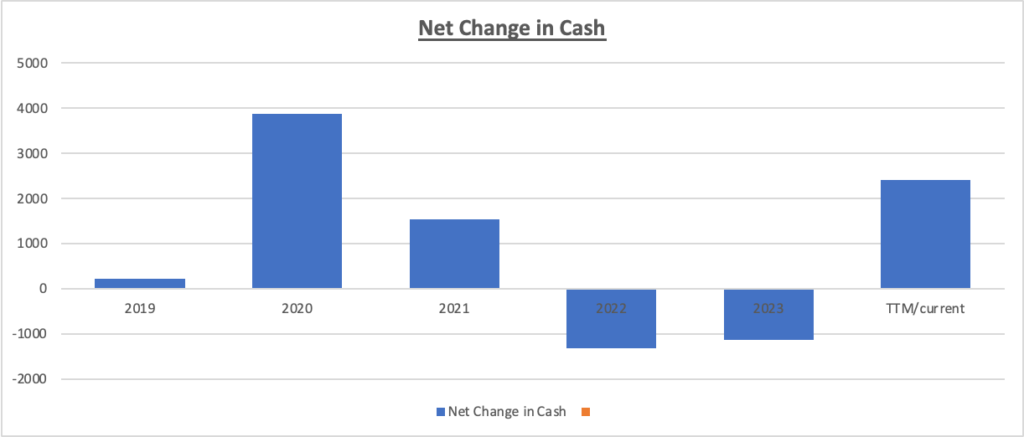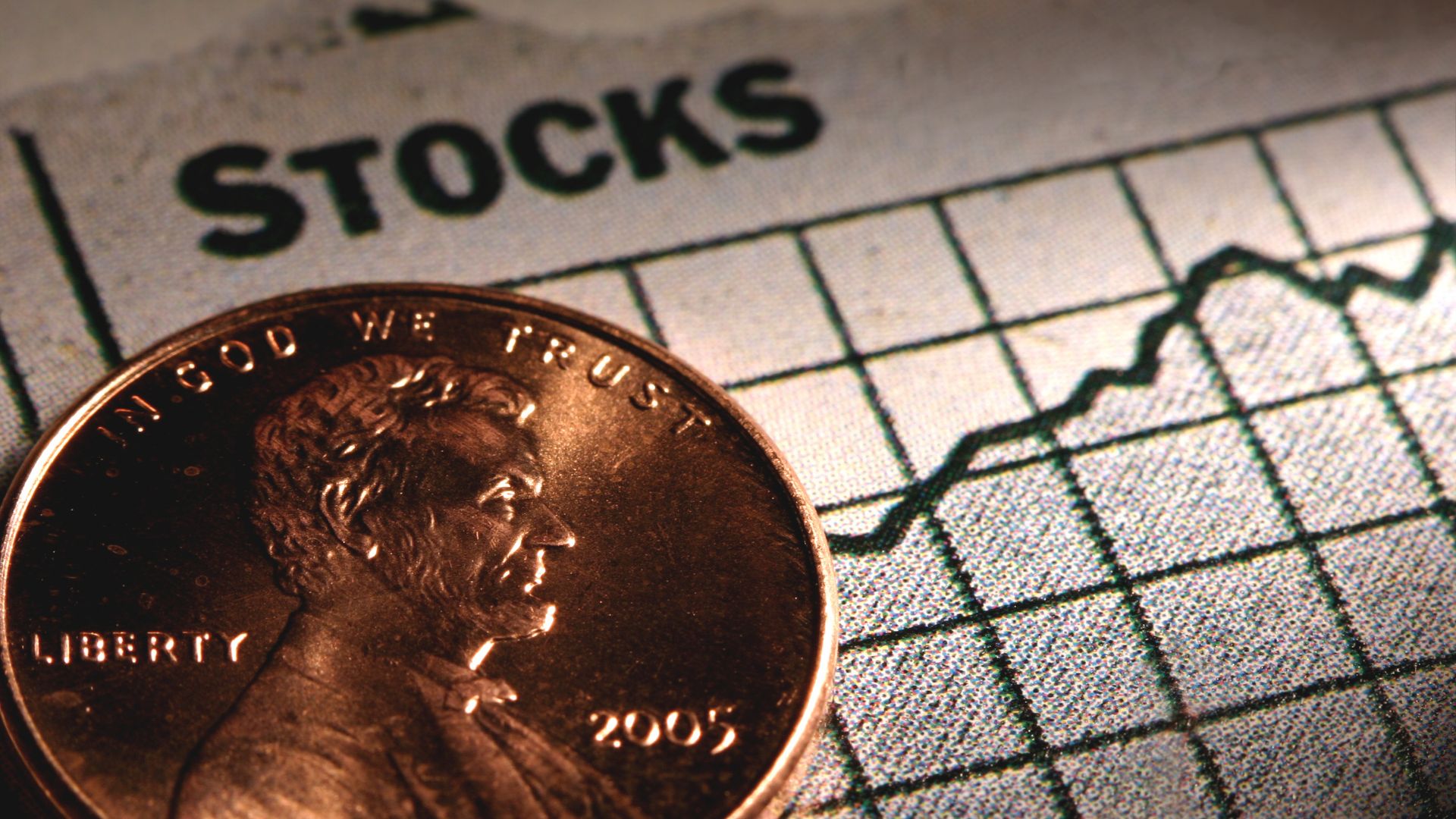When it comes to investing, understanding a company’s financial stability is crucial in ensuring a margin of safety. For a global giant like Nike, this analysis becomes even more significant. As the world’s leading sportswear brand, Nike’s financial health not only impacts its stock performance but also serves as a barometer for the entire sector.
In this article, we’ll dive deep into Nike’s financial security by examining key indicators such as the Cash Ratio, Net Change in Cash over time, and the Debt to Equity Ratio. By scrutinizing these metrics, we aim to provide a clear picture of Nike’s fiscal strength, helping investors make informed decisions about the security of their investments in the brand.
The Cash Ratio: A Critical Measure of Nike’s Financial Cushion
When evaluating the financial security of a company like Nike, the Cash Ratio is a key metric that should not be overlooked. This ratio provides insight into how well a company can cover its short-term liabilities with its most liquid assets—cash and cash equivalents. In times of economic uncertainty or unexpected expenses, a strong Cash Ratio can be a lifesaver, ensuring that the company can meet its obligations without the need to liquidate other assets or take on additional debt.
Why the Cash Ratio Matters
The importance of the Cash Ratio lies in its ability to provide a conservative view of a company’s liquidity. Unlike the Current Ratio, which includes inventory and accounts receivable, the Cash Ratio focuses solely on cash and cash equivalents. This makes it a more stringent test of financial health, particularly in industries where receivables might be less liquid or where inventory turnover is slow.
For Nike, a healthy Cash Ratio indicates that the company is well-prepared to handle short-term financial challenges. This is especially crucial for a global company like Nike, which operates in a competitive and dynamic market. High liquidity ensures that Nike can continue to invest in innovation, marketing, and expansion without compromising its ability to pay off immediate obligations.
Nike’s Cash Ratio: What It Tells Us
Analyzing Nike’s Cash Ratio over time gives us insight into how well the company manages its liquidity. A strong or improving Cash Ratio suggests that Nike is maintaining a solid financial cushion, which is crucial for long-term stability and growth. This, in turn, provides investors with a margin of safety, reassuring them that the company can withstand economic fluctuations and unexpected challenges without jeopardizing its financial position.
Nike’s Cash Ratio has seen notable shifts over recent years, reflecting the company’s evolving liquidity strategy. From 2019 to 2021, the ratio rose sharply, peaking around 1.50, indicating a strong liquidity position—likely a precaution during the uncertainties of the pandemic. However, from 2021 onward, the ratio gradually declined to around 1.10, signaling a shift as Nike reallocated resources, yet still maintained enough cash to cover short-term liabilities comfortably.

Most recently, Nike’s Cash Ratio has converged with its 5-year average, suggesting a return to a more balanced cash management approach. This stability signals to investors that Nike is financially secure, consistently maintaining a solid margin of safety while strategically managing its cash reserves.
Cash Ratio – Industry Benchmark
| TTM | Nike | Adidas | Under Armour | Puma |
| Cash Ratio | 1.09 | 0.29 | 0.74 | 0.11 |
Here’s a concise analysis of the cash ratios for Nike and its peers:
- Nike: 1.09 — Strong liquidity; has more cash than short-term liabilities.
- Adidas: 0.29 — Lower liquidity; relies more on other assets for short-term obligations.
- Under Armour: 0.74 — Better than Adidas but not as strong as Nike.
- Puma: 0.11 — Lowest liquidity; significant reliance on other resources.
Nike’s cash ratio indicates exceptional liquidity compared to its peers, reflecting a strong financial position. Adidas, Under Armour, and Puma have lower ratios, suggesting varying degrees of financial risk and reliance on other resources.
Net Change in Cash: Tracking Nike’s Financial Fluidity
The Net Change in Cash is a crucial metric that reveals how much a company’s cash position has fluctuated over a specific period. For Nike, monitoring this change provides insights into how effectively the company is managing its cash flow—whether through operations, investing activities, or financing decisions.
Why Net Change in Cash Matters
Net Change in Cash is vital for assessing Nike’s ability to generate cash internally and its overall financial health. Positive net cash flow typically indicates that the company is generating more cash than it’s spending, which can be reinvested into the business, used to pay down debt, or returned to shareholders. Conversely, a negative cash flow might suggest the company is investing heavily in growth or paying down liabilities, which, while not inherently negative, requires careful consideration.
Analyzing Nike’s Net Change in Cash
Over the years, Nike’s Net Change in Cash has provided a window into its operational and strategic choices. A significant increase in cash might indicate robust sales, efficient operations, or conservative spending during uncertain periods. On the other hand, decreases in cash reserves could point to strategic investments in innovation, expansion, or shareholder returns, such as dividends and stock buybacks.
For investors, the Net Change in Cash metric helps gauge how well Nike is balancing its cash inflows and outflows. A consistent pattern of positive cash flow reflects financial stability and strong business performance, offering reassurance that Nike is well-positioned to support its ongoing growth and to provide a margin of safety for investors.

Nike’s Net Change in Cash has fluctuated significantly over recent years, reflecting shifts in the company’s cash management strategy. In 2020, Nike saw a sharp increase in cash reserves, likely as a precaution during the pandemic. This was followed by a continued, though smaller, positive cash flow in 2021. However, in 2022 and 2023, the company experienced negative cash flow, likely due to strategic investments or shareholder returns. Most recently, Nike has returned to positive cash flow, indicating a stabilization in its finances. This dynamic approach highlights Nike’s ability to adapt its cash management in response to changing circumstances, reinforcing its financial resilience and strategic foresight.
Debt to Equity Ratio: Assessing Nike’s Financial Leverage
The Debt to Equity Ratio is a critical indicator of how a company finances its operations, revealing the balance between debt and equity in its capital structure. For investors, this ratio is essential as it provides insight into the level of risk associated with the company’s financial obligations.
Why the Debt to Equity Ratio Matters
The Debt to Equity Ratio measures the proportion of a company’s debt relative to its shareholders’ equity. A higher ratio suggests that a company relies more on debt to finance its operations, which can increase financial risk, particularly if the company faces downturns or rising interest rates. Conversely, a lower ratio indicates a more conservative approach, with greater reliance on equity financing, which generally implies lower financial risk.
For Nike, this ratio is particularly important given the company’s global scale and the competitive nature of the sportswear industry. Maintaining a balanced Debt to Equity Ratio ensures that Nike can invest in growth and innovation without overextending itself financially.
Analyzing Nike’s Debt to Equity Ratio
Over the years, Nike has managed its Debt to Equity Ratio carefully, aiming to strike a balance between leveraging debt for growth and maintaining financial stability. A moderate ratio suggests that Nike uses debt strategically to finance its operations and investments, without putting undue pressure on its balance sheet.
Investors should pay close attention to any significant changes in this ratio. A rising Debt to Equity Ratio might indicate that Nike is taking on more debt to fuel expansion or manage costs, which could increase financial risk. On the other hand, a declining ratio could signal a shift towards more equity financing, possibly reflecting a focus on reducing debt levels and enhancing financial security.
| 2021 | 2022 | 2023 | 2024 | TTM | |
| Debt to Equity Ratio | 1.00 | 0.83 | 0.87 | 0.83 | 0.83 |
Nike’s Debt to Equity Ratio has shown relative stability over the past few years. Starting at 1.00 in 2021, the ratio decreased to 0.83 in 2022, reflecting a shift towards reducing debt or increasing equity. This trend of a lower ratio persisted through 2023 and into the TTM period, where the ratio remained steady at 0.83. This consistency suggests that Nike has been managing its financial leverage conservatively, maintaining a balanced approach to debt and equity that minimizes risk while supporting ongoing growth.
Conclusion
Nike’s financial stability is pivotal for investor confidence, and the company’s metrics illustrate a robust and resilient fiscal position. With a strong cash ratio of 1.09, Nike demonstrates superior liquidity compared to its peers, ensuring it can comfortably cover short-term liabilities. The net change in cash reflects Nike’s strategic adaptability, with fluctuations indicative of proactive cash management in response to market conditions. Additionally, Nike’s consistent Debt to Equity Ratio of 0.83 highlights a balanced approach to leveraging debt while minimizing financial risk.
Overall, Nike’s strong liquidity, strategic cash flow management, and stable financial leverage collectively underscore its sound financial health. For investors, these indicators provide reassurance of Nike’s ability to navigate economic uncertainties and sustain growth, making it a secure and attractive investment choice.

